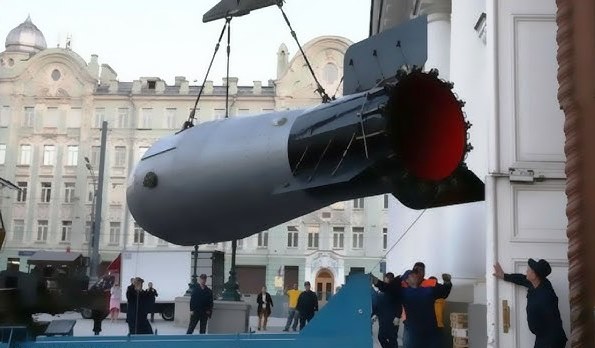🕵️♂️Get Up to 80% Off On All Products, StaySharp⚡
Decoding Tsar Bomba: The World's Most Powerful Nuclear Weapon and Its Lasting Legacy
This article explores the legacy of Tsar Bomba, the most powerful nuclear weapon ever detonated. It delves into the science behind the 50-megaton explosion, its political significance during the Cold War, and the global impact on nuclear policy and environmental awareness. A profound reminder of humanity's destructive capabilities, Tsar Bomba remains a pivotal moment in history.
DEVELOPMENT AND ECONOMIC THREATS
Phillemon Neluvhalani
10/17/20244 min read


In the midst of the Cold War, the world stood on edge as the United States and the Soviet Union engaged in a relentless arms race. The height of this tension was symbolized by the creation of the most powerful nuclear weapon ever detonated—Tsar Bomba. On October 30, 1961, the Soviet Union tested this 50-megaton thermonuclear bomb over the Novaya Zemlya archipelago, forever changing the scale of human destruction. To fully understand Tsar Bomba is to decode not only its sheer power but also its political, scientific, and human implications.
The Birth of Tsar Bomba: A Political Statement
Tsar Bomba wasn’t just a nuclear weapon—it was a political statement. At a time when both superpowers were striving to assert dominance, the Soviet Union sought to demonstrate that it was capable of producing a bomb far more powerful than anything the United States had developed. Nikita Khrushchev, the then-leader of the Soviet Union, championed the creation of this superweapon as a way to solidify his country’s standing on the global stage.
The bomb's initial design had a theoretical yield of 100 megatons—double the power of the final version. However, the Soviet Union scaled it down to 50 megatons, partly due to the fear that detonating something so massive would have devastating, uncontrollable environmental consequences. Even then, the resulting explosion was still the largest ever created by humans, producing seismic waves detectable around the globe.
The Physics Behind the Monster
Tsar Bomba’s immense power came from its three-stage design, incorporating both fission and fusion reactions. While earlier nuclear bombs, such as those dropped on Hiroshima and Nagasaki, were primarily fission-based, Tsar Bomba employed a multi-stage thermonuclear process. This involves using a fission bomb to initiate a fusion reaction, which then triggers a second fusion stage and so on. Each stage releases more energy than the one before it, exponentially increasing the overall yield.
Most atomic bombs rely on uranium-235 or plutonium-239 to fuel the fission reaction. In Tsar Bomba, these materials were combined with lithium deuteride, a solid fusion fuel. This combination gave the bomb an unparalleled explosive force. It’s also worth noting that the design was modified to reduce the amount of fallout produced, making it a “cleaner” bomb compared to others of its kind. That said, the environmental impact was still catastrophic.
The Detonation: Unleashing Hell on Earth
On that fateful day in 1961, a specially modified Tu-95 bomber dropped Tsar Bomba from a height of 34,000 feet. To give the crew a fighting chance of survival, the bomb was equipped with a massive parachute to slow its descent, allowing the plane time to fly to safety.
At 11:32 AM, Tsar Bomba detonated 13,000 feet above ground, and the explosion was nothing short of apocalyptic. The blast radius extended over 35 kilometers, and the mushroom cloud rose over 60 kilometers into the sky, nearly reaching the edge of space. The light from the explosion was visible up to 1,000 kilometers away, and witnesses reported feeling the shockwave as far as Norway and Alaska. If the bomb had been dropped over a major city like London or New York, it would have annihilated everything within hundreds of square kilometers.
The energy released was equivalent to 50 million tons of TNT, dwarfing the bombs dropped on Hiroshima and Nagasaki. In fact, it was 1,500 times more powerful than both combined. The thermal radiation could cause third-degree burns 100 kilometers from ground zero, and windows were shattered over 900 kilometers away.
Scientific and Environmental Impact
The detonation of Tsar Bomba was a chilling demonstration of mankind’s ability to wield almost god-like destructive power. The sheer magnitude of the explosion led scientists to rethink the consequences of such tests on the environment and human health. Despite being a "clean" bomb, the fallout from the explosion still had far-reaching effects.
Nuclear explosions release dangerous levels of radioactive isotopes, including iodine-131, cesium-137, and strontium-90, which can contaminate the environment for decades. These isotopes can enter the food chain, poisoning animals and humans alike. Fortunately, due to the bomb’s location over the Arctic Circle, the impact on human populations was minimal, but the test still contributed to the global atmospheric radiation levels.
Tsar Bomba also spurred deeper conversations among scientists about the concept of nuclear winter—a scenario in which multiple nuclear explosions could send so much debris into the atmosphere that it blocks sunlight, causing a drastic drop in global temperatures. This realization, coupled with the humanitarian horrors of such a weapon, laid the groundwork for arms reduction treaties later in the century.
A Turning Point in the Arms Race
While Tsar Bomba was a triumph for Soviet engineers and a masterstroke of political posturing, it also underscored the futility of the nuclear arms race. The weapon was simply too powerful to be used. Deploying such a bomb would have caused environmental devastation on a scale that even its creators found horrifying. Both the U.S. and Soviet Union realized that mutually assured destruction (MAD) would leave no winners in the event of a full-scale nuclear war.
The detonation of Tsar Bomba, while terrifying, ultimately helped to steer global powers toward arms control agreements. In 1963, just two years after its detonation, the U.S. and Soviet Union signed the Partial Test Ban Treaty, which prohibited nuclear tests in the atmosphere, outer space, and underwater. It was a small but significant step toward de-escalating the arms race.
Tsar Bomba's Legacy
In the decades since of its detonation, Tsar Bomba has become an enduring symbol of the Cold War, a terrifying reminder of what could happen if diplomacy fails. It stands as a relic of a time when nations believed that strength could be measured by the size of their nuclear arsenals.
However, Tsar Bomba’s legacy isn’t just about raw power. It’s also about the responsibility that comes with such destructive capabilities. The bomb pushed the boundaries of human innovation and forced us to confront the ethical implications of technological progress. In an age when technology is advancing faster than ever, the lesson of Tsar Bomba is more relevant than ever: just because we can build something doesn’t mean we should.
The Dual Nature of Power
Tsar Bomba was a paradox—a demonstration of both the brilliance and the darkness of human ingenuity. On the one hand, it was a remarkable feat of engineering and physics, a testament to the capabilities of scientific achievement. On the other hand, it was a stark reminder of humanity’s potential for self-destruction.
Decoding the Tsar Bomba, we uncover not just a weapon of mass destruction, but also a story about political power, scientific ambition, and ethical responsibility. As we look back on this moment in history, we’re left to wonder: what price are we willing to pay for power?



